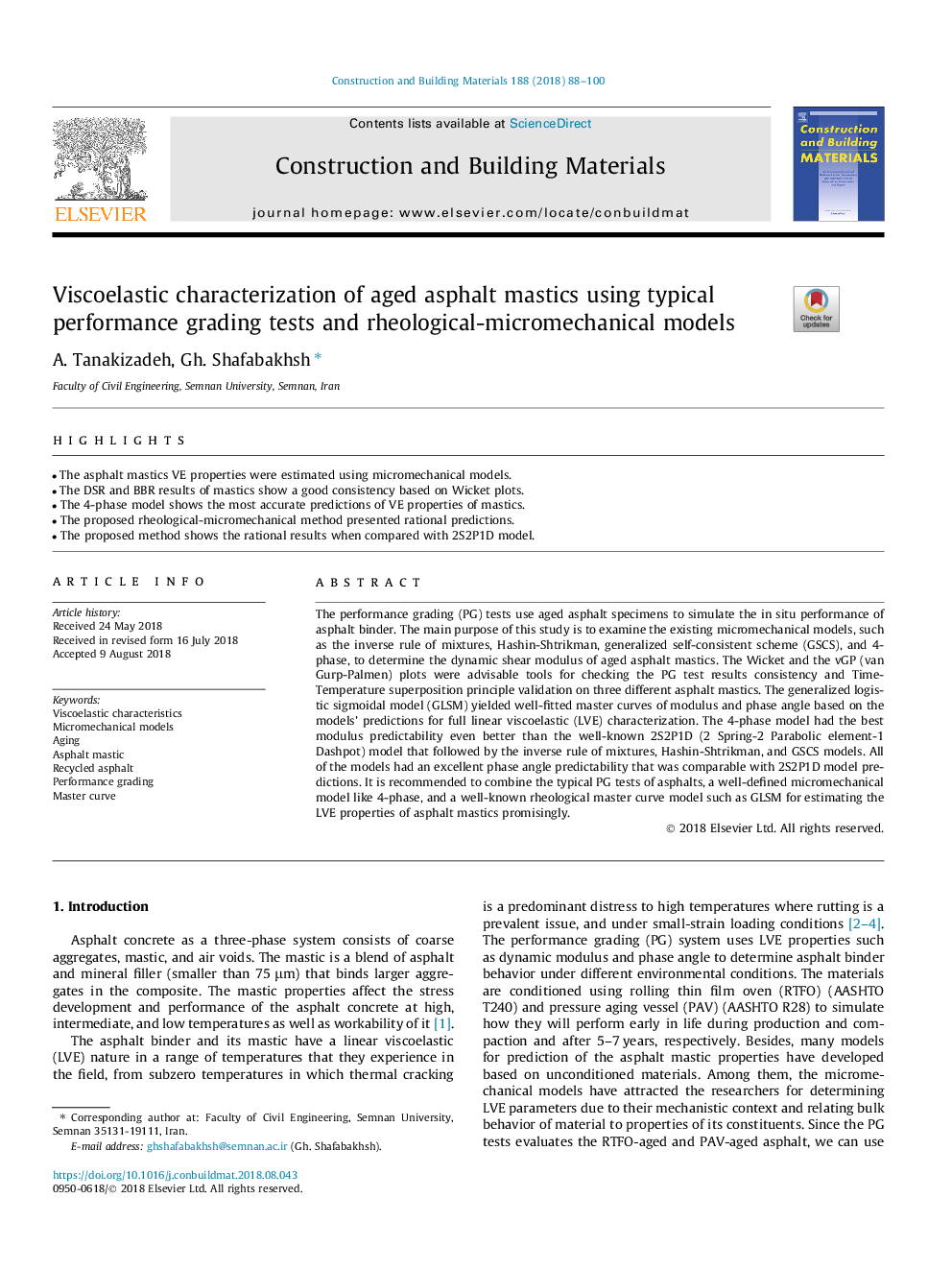| Article ID | Journal | Published Year | Pages | File Type |
|---|---|---|---|---|
| 8947042 | Construction and Building Materials | 2018 | 13 Pages |
Abstract
The performance grading (PG) tests use aged asphalt specimens to simulate the in situ performance of asphalt binder. The main purpose of this study is to examine the existing micromechanical models, such as the inverse rule of mixtures, Hashin-Shtrikman, generalized self-consistent scheme (GSCS), and 4-phase, to determine the dynamic shear modulus of aged asphalt mastics. The Wicket and the vGP (van Gurp-Palmen) plots were advisable tools for checking the PG test results consistency and Time-Temperature superposition principle validation on three different asphalt mastics. The generalized logistic sigmoidal model (GLSM) yielded well-fitted master curves of modulus and phase angle based on the models' predictions for full linear viscoelastic (LVE) characterization. The 4-phase model had the best modulus predictability even better than the well-known 2S2P1D (2 Spring-2 Parabolic element-1 Dashpot) model that followed by the inverse rule of mixtures, Hashin-Shtrikman, and GSCS models. All of the models had an excellent phase angle predictability that was comparable with 2S2P1D model predictions. It is recommended to combine the typical PG tests of asphalts, a well-defined micromechanical model like 4-phase, and a well-known rheological master curve model such as GLSM for estimating the LVE properties of asphalt mastics promisingly.
Keywords
Related Topics
Physical Sciences and Engineering
Engineering
Civil and Structural Engineering
Authors
A. Tanakizadeh, Gh. Shafabakhsh,
